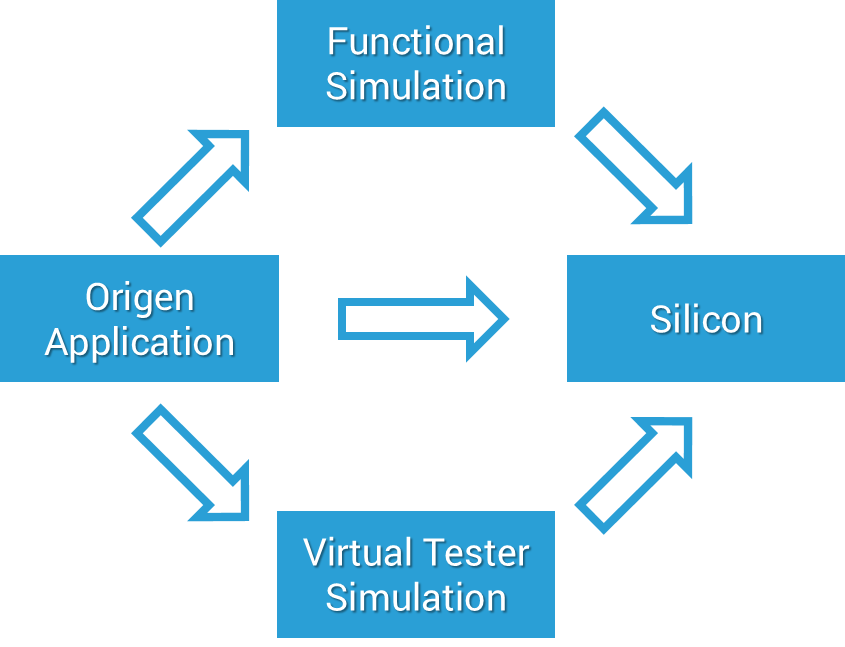Pattern Generator
Introduction
Origen was initially conceived to be a pattern generator and as you would expect it provides powerful APIs to generate tester patterns from your device models. These APIs endeavour to abstract as much of the underlying ATE API as possible so that quite often all that is required to switch ATE platforms is to change the tester model instantiated by the environment.
With Origen, an application can also easily create custom tester drivers which (for example) can be used to generate patterns in a format that can be run on the bench (as a J-Link command file for example) or in a functional simulation - basically generating your pattern as a Verilog stimulus file.
Origen is a simulation-less pattern generation tool and it is therefore very quick and lightweight compared to more traditional simulation-based pattern generation workflows. When combined with the growing number of quality Origen plugins that are available to provide common hardware (e.g. JTAG) and protocol drivers (e.g. ARM Debug, Nexus), the speed of pattern development that can be achieved with Origen is unrivaled. With a bit of practice you can literally go from nothing to a working pattern for a new application within 10 minutes.
Simulations still have their place, after all they are the only way to get pre-silicon feedback on whether a given pattern will actually work or not. An Origen-based workflow can still make heavy use of simulations for pre-silicon validation of test IP, however the downsides of requiring a simulation to actually generate a pattern (workflow complexity, slow generation times) are removed.
This leads to much quicker turn around of pattern changes, which means that they can be regenerated in real time while debugging on the tester.
